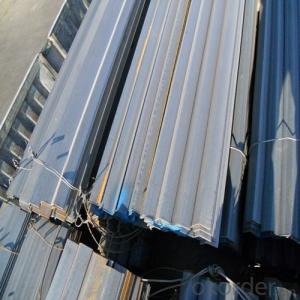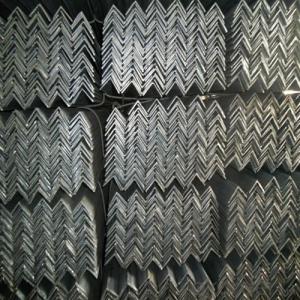Mild Steel Profile Formed Angle L Type Small Sizes for Africa and Asia
- Loading Port:
- Tianjin
- Payment Terms:
- TT or LC
- Min Order Qty:
- 25 m.t.
- Supply Capability:
- 30000 m.t./month
OKorder Service Pledge
OKorder Financial Service
You Might Also Like
1. Structure of Mild Steel Profile Formed Angle L Type Description:
Mild steel profile formed angle L type is a main kind of structure steel and the section is like a letter L. We use mild steel profile formed angle for structure construction. Mild steel profile formed angle can be erected as soon as the materials are delivered on site. High strength, stiffness, toughness, and ductile properties are advantages of this kind of mild steel profile formed angle.
2. Main Features of Mild Steel Profile Formed Angle L Type:
• Strength - Having high strength, stiffness, toughness, and ductile properties, structural steel is one of the most commonly used materials in commercial and industrial building construction.
• Constructability - Steel equal angle Bar can be developed into nearly any shape, which are either bolted or welded together in construction. Structural steel can be erected as soon as the materials are delivered on site, whereas concrete must be cured at least 1–2 weeks after pouring before construction can continue, making steel a schedule-friendly construction material.
• Fire resistance - Steel is inherently a noncombustible material. However, when heated to temperatures seen in a fire scenario, the strength and stiffness of the material is significantly reduced. The steel equal angle bar can be enveloped in sufficient fire-resistant materials, increasing overall cost of steel structure buildings.
3. Mild Steel Profile Formed Angle L Type Images:
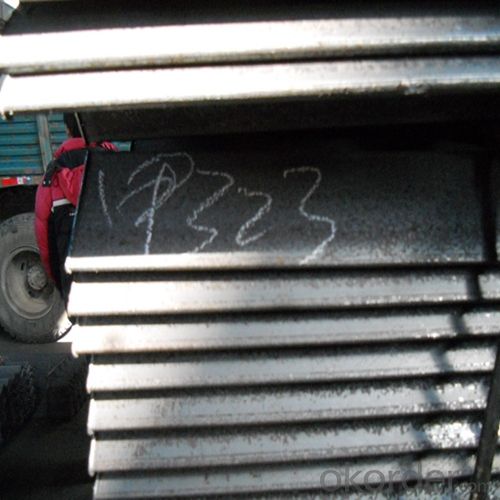
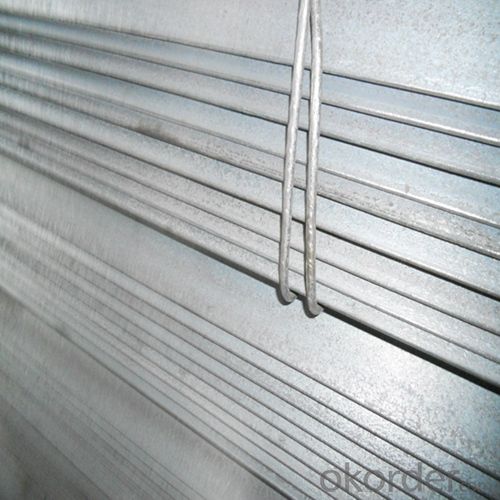
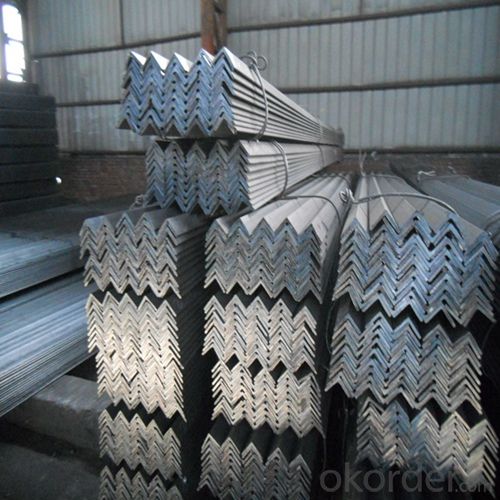
4. Mild Steel Profile Formed Angle L Type Specification:
Angle | KG/M | Angle | KG/M | Angle | KG/M | Angle | KG/M |
20X20X3 | 0.889 | 60X60X5 | 4.570 | 90X90X8 | 10.946 | 130X130X12 | 23.600 |
20X20X4 | 1.145 | 60X60X6 | 5.427 | 90X90X9 | 12.220 | 130X130X13 | 25.400 |
25X25X2 | 0.763 | 63X63X4 | 3.907 | 90X90X10 | 13.476 | 130X130X14 | 27.200 |
25X25X3 | 1.124 | 63X63X5 | 4.822 | 90X90X15 | 15.940 | 130X130X16 | 30.900 |
25X25X4 | 1.459 | 63X63X6 | 5.721 | 100X100X6 | 9.366 | 140X140X10 | 21.488 |
30X30X2 | 0.922 | 63X63X8 | 7.469 | 100X100X7 | 10.830 | 140X140X12 | 25.522 |
30X30X3 | 1.373 | 63X63X10 | 9.151 | 100X100X8 | 12.276 | 140X140X14 | 29.490 |
30X30X4 | 1.786 | 70X70X4 | 4.372 | 100X100X10 | 15.120 | 140X140X15 | 31.451 |
36X36X3 | 1.656 | 70X70X5 | 5.397 | 100X100X12 | 17.898 | 140X140X16 | 33.393 |
5. FAQ
We have organized several common questions for our clients,may help you sincerely:
①How about the corrosion of the products?
When the steel equal angle bar in contact with water, can corrode, creating a potentially dangerous structure. Measures must be taken in structural steel construction to prevent any lifetime corrosion. The steel can be painted, providing water resistance. Also, the fire resistance material used to envelope steel is commonly water resistant.
②How to inspect the quality?
We have a professional inspection group which belongs to our company. We resolutely put an end to unqualified products flowing into the market. At the same time, we will provide necessary follow-up service assurance.
③What is the difference between steel angle bar and traditional material?
Steel equal angle bar differs from concrete in its attributed compressive strength as well as tensile strength.
- Q:Can steel angles be used in overhead crane or hoist systems?
- Indeed, overhead crane or hoist systems can indeed utilize steel angles. These structural components find widespread application in the construction of crane runways, support structures, and trolley rails. By furnishing a robust and inflexible framework for the crane or hoist system, steel angles prove their worth. Notably, their superior strength-to-weight ratio renders them an optimal selection for heavy-duty tasks. Furthermore, the convenience of welding or bolting steel angles together facilitates effortless installation and customization. All in all, steel angles offer a dependable and economically viable choice for integration into overhead crane or hoist systems.
- Q:Can steel angles be used as lintels or supports for openings?
- Lintels or supports for openings, such as doors and windows, can be made using steel angles. In construction, steel angles are frequently utilized as structural elements because of their durability and strength. These angles offer the necessary structural support to withstand the weight above the opening. They are commonly installed horizontally, with one leg of the angle resting against the wall on each side. This allows the load from the structure above to be transferred to the steel angle, which then distributes the weight to the surrounding walls. Steel angles are a preferred option for lintels and supports because of their ability to bear heavy loads and resist bending and twisting forces.
- Q:Can steel angles be used for support beams in warehouse construction?
- Yes, steel angles can be used for support beams in warehouse construction. Steel angles are commonly used in construction for their strength and load-bearing capabilities. They provide structural support and stability, making them suitable for supporting heavy loads in warehouse buildings.
- Q:What are the common standards and specifications for steel angles?
- Different applications and countries have varying common standards and specifications for steel angles. Notably, the following recognized standards and specifications exist: 1. ASTM A36/A36M: This standard pertains to carbon structural steel, encompassing steel angles, as well as channels and beams. It outlines the chemical composition, mechanical properties, and other essential requirements. 2. ASTM A529/A529M: This specification focuses on high-strength carbon-manganese steel shapes, including angles, used in construction. It specifies chemical composition, mechanical properties, and other significant characteristics. 3. ASTM A572/A572M: Encompassing high-strength low-alloy structural steel shapes, this specification includes angles for construction applications. It delineates the chemical composition, mechanical properties, and other relevant requirements. 4. EN 10056: A European standard, EN 10056, specifies tolerances on shape, dimensions, and mass for hot-rolled structural steel equal and unequal angles. It also outlines chemical composition, mechanical properties, and other characteristics. 5. JIS G3192: This Japanese industrial standard defines dimensions, mass, and tolerances for hot-rolled steel sections, including angles. It establishes requirements for chemical composition, mechanical properties, and other pertinent specifications. These examples demonstrate a fraction of the frequently employed standards and specifications for steel angles. To ensure compliance and meet desired requirements, it is crucial to consult the specific regulations and standards applicable to the region and application.
- Q:What is the maximum bending moment for a steel angle?
- The maximum bending moment for a steel angle depends on various factors such as the dimensions, material properties, and loading conditions. It cannot be determined without specific information about the angle and the forces acting on it.
- Q:How do steel angles contribute to the overall sustainability of a building?
- Steel angles contribute to the overall sustainability of a building in several ways. Firstly, they are often made from recycled steel, reducing the demand for raw materials and the energy required for manufacturing. Additionally, steel angles are durable and long-lasting, reducing the need for frequent replacements and minimizing waste. Their strength and versatility also allow for efficient structural designs, optimizing the use of materials and reducing the overall weight of the building. Lastly, steel angles can be easily recycled at the end of their life cycle, further reducing the environmental impact of the building.
- Q:What are the properties of steel angles?
- Steel angles, which are also referred to as angle iron or L-shaped steel, possess numerous qualities that contribute to their extensive use and versatility across various industries. 1. Strength and durability: Solid steel is used to manufacture steel angles, resulting in exceptional strength and durability. These attributes render them suitable for structural applications that demand high strength, such as constructing building frames and supports. 2. Load-bearing capability: The L-shaped design of steel angles enables them to offer excellent load-bearing capacity. They can efficiently distribute weight and provide structural support, making them ideal for the construction of bridges, towers, and other heavy-duty structures. 3. Versatility in applications: The flexibility and adaptability of steel angles allow for their usage in a wide array of applications. They can be easily cut, drilled, and welded, facilitating customization to meet specific project requirements. Commonly employed in the construction, manufacturing, and automotive industries, steel angles showcase their versatility. 4. Resistance to corrosion: Steel angles can be manufactured with corrosion-resistant coatings or can be made from stainless steel. This provides protection against rust and other environmental factors. Thus, they are suitable for outdoor applications and environments with high moisture or chemical exposure. 5. Cost-effectiveness: Comparatively, steel angles are cost-effective when compared to other structural materials like aluminum or wood. They possess a high strength-to-weight ratio, thereby minimizing the amount of material required for a given application. Consequently, steel angles are a cost-efficient choice for various construction projects. 6. Aesthetic appeal: Steel angles can also be utilized for their aesthetic appeal, adding a visually pleasing dimension to architectural designs. They can serve decorative purposes in interior design or as part of ornamental structures, providing both functionality and visual interest. In conclusion, the properties of steel angles, including their strength, load-bearing capacity, versatility, corrosion resistance, cost-effectiveness, and aesthetic appeal, make them an excellent choice for a wide range of applications in different industries.
- Q:What are the common welding techniques for steel angles?
- The common welding techniques for steel angles include shielded metal arc welding (SMAW), gas metal arc welding (GMAW), and flux-cored arc welding (FCAW).
- Q:What are the different types of steel angles used in door and window frames?
- The different types of steel angles commonly used in door and window frames include equal angle, unequal angle, L-shaped angle, and T-shaped angle.
- Q:Can steel angles be used for column supports?
- Yes, steel angles can be used for column supports. Steel angles are commonly used in construction as they provide structural support and stability, making them suitable for column supports. They offer excellent strength and load-bearing capacity, making them a reliable choice for supporting vertical loads.
1. Manufacturer Overview |
|
|---|---|
| Location | |
| Year Established | |
| Annual Output Value | |
| Main Markets | |
| Company Certifications | |
2. Manufacturer Certificates |
|
|---|---|
| a) Certification Name | |
| Range | |
| Reference | |
| Validity Period | |
3. Manufacturer Capability |
|
|---|---|
| a)Trade Capacity | |
| Nearest Port | |
| Export Percentage | |
| No.of Employees in Trade Department | |
| Language Spoken: | |
| b)Factory Information | |
| Factory Size: | |
| No. of Production Lines | |
| Contract Manufacturing | |
| Product Price Range | |
Send your message to us
Mild Steel Profile Formed Angle L Type Small Sizes for Africa and Asia
- Loading Port:
- Tianjin
- Payment Terms:
- TT or LC
- Min Order Qty:
- 25 m.t.
- Supply Capability:
- 30000 m.t./month
OKorder Service Pledge
OKorder Financial Service
Similar products
New products
Hot products
Hot Searches
Related keywords
